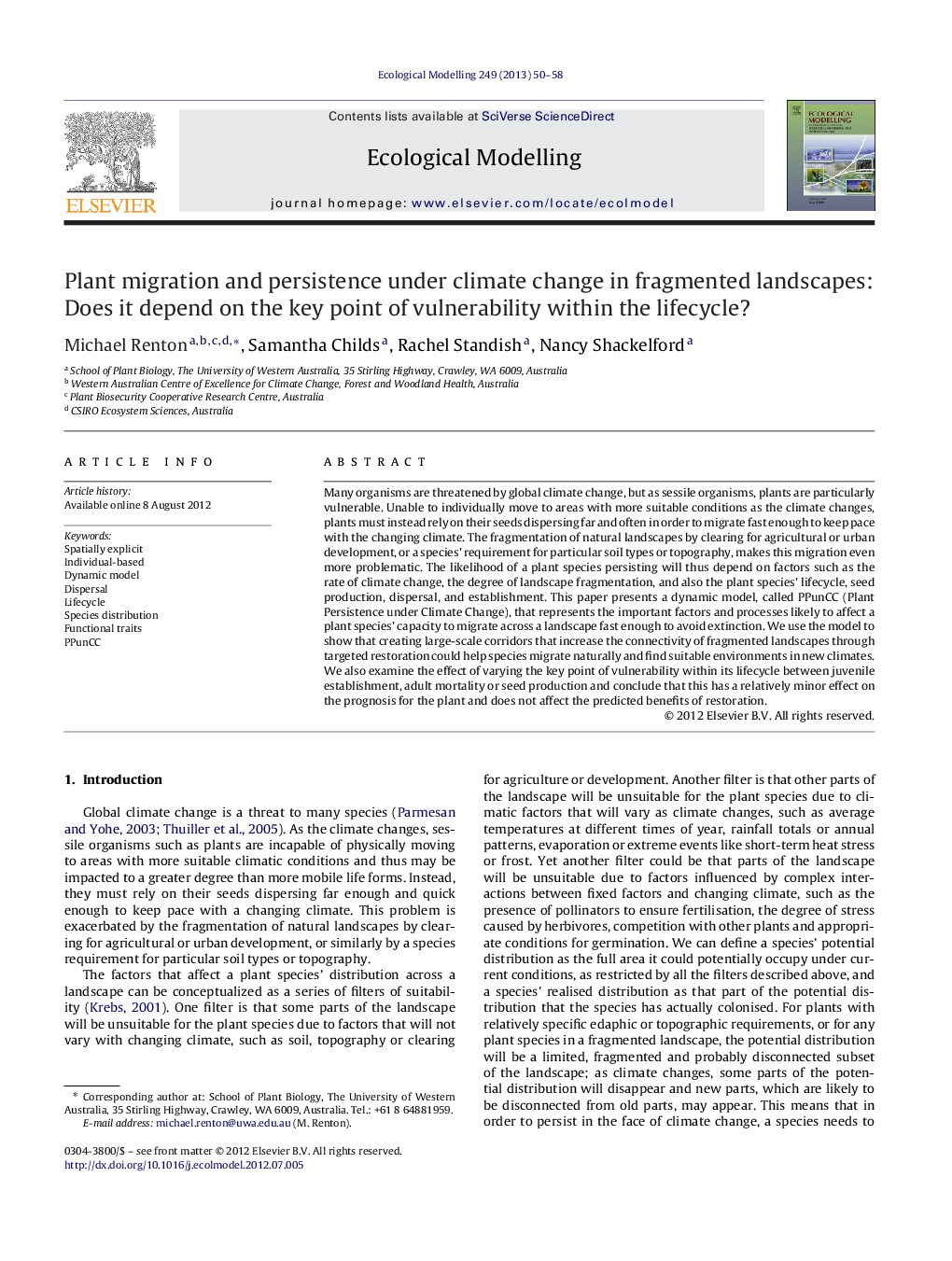| Article ID | Journal | Published Year | Pages | File Type |
|---|---|---|---|---|
| 4376276 | Ecological Modelling | 2013 | 9 Pages |
Many organisms are threatened by global climate change, but as sessile organisms, plants are particularly vulnerable. Unable to individually move to areas with more suitable conditions as the climate changes, plants must instead rely on their seeds dispersing far and often in order to migrate fast enough to keep pace with the changing climate. The fragmentation of natural landscapes by clearing for agricultural or urban development, or a species’ requirement for particular soil types or topography, makes this migration even more problematic. The likelihood of a plant species persisting will thus depend on factors such as the rate of climate change, the degree of landscape fragmentation, and also the plant species’ lifecycle, seed production, dispersal, and establishment. This paper presents a dynamic model, called PPunCC (Plant Persistence under Climate Change), that represents the important factors and processes likely to affect a plant species’ capacity to migrate across a landscape fast enough to avoid extinction. We use the model to show that creating large-scale corridors that increase the connectivity of fragmented landscapes through targeted restoration could help species migrate naturally and find suitable environments in new climates. We also examine the effect of varying the key point of vulnerability within its lifecycle between juvenile establishment, adult mortality or seed production and conclude that this has a relatively minor effect on the prognosis for the plant and does not affect the predicted benefits of restoration.
► Our dynamic model tests plant species capacity to migrate across a landscape under climate change. ► We test effects of targeted restoration to increase connectivity of fragmented landscapes. ► We also test the effect of varying the key point of vulnerability within the plants lifecycle. ► Restoration can help species migrate naturally and find suitable environments in new climates. ► The key point of vulnerability does not affect the predicted benefits of restoration.
